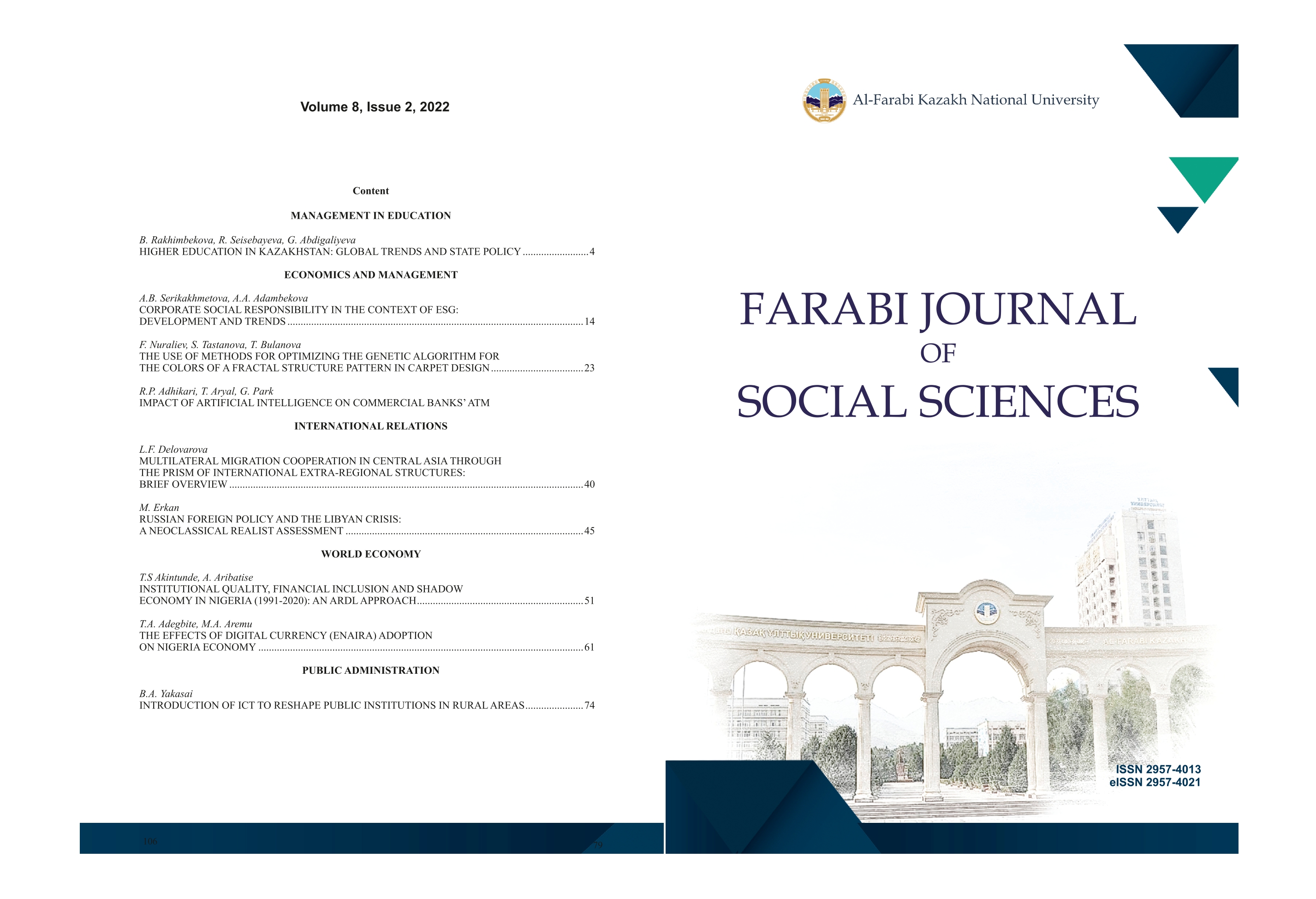MULTILATERAL MIGRATION COOPERATION IN CENTRAL ASIA THROUGH THE PRISM OF INTERNATIONAL EXTRA-REGIONAL STRUCTURES: BRIEF OVERVIEW
DOI:
https://doi.org/10.26577/FJSS.2022.v8.i2.04Abstract
This article examines aspects of multilateral migration cooperation in Central Asia through the prism of international structures with a specific focus on Kazakhstan. International migration has been a global phenomenon for several decades of the 20th century. The intensification of migration in all regions of the world and the increasing influence of the various effects of migration at all levels calls for a more coordinated migration. Modern Central Asia, represented by Kazakhstan, Kyrgyzstan, Tajikistan, Turkmenistan and Uzbekistan for a third of a century, has already been part of the global migration process, has its own specifics and experiences various influences of mobility both within the region and at the extra-regional level. Within the region, a separate organization or platform has not yet been formed that would cover exclusively migration cooperation. Along with this, there are organizations on the basis of which a solid foundation has been formed for the effective coordination of labor migration processes, the prevention of forced and irregular migration. To clarify the effectiveness and potential of migration coordination, this article will consider the activities in the field of migration of the Commonwealth of Independent States, the Eurasian Economic Union, the Shanghai Cooperation Organization and the Almaty Process.
Keywords: International Migration, Kazakhstan, Migration Cooperation, Central Asia, Almaty Process, SCO, EEU.




